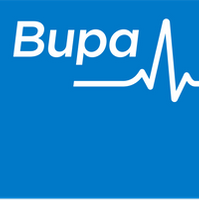Seven key areas influencing employee wellbeing
Investing in employee wellbeing can lead to “increased resilience, better employee engagement, reduced sickness absence and higher performance and productivity”, according to the Chartered Institute of Professional Development (CIPD).
However, estimates of return on investment vary, partly due to different approaches to delivering wellbeing support. That’s why a one-sized approach doesn’t fit all when creating a culture that fosters preventative and proactive healthcare in the workplace.
The CIPD adds: “To gain real benefit, employee wellbeing priorities must be integrated throughout an organisation, embedded in its culture, leadership and people management.”
Good practice
What does an effective approach to workplace wellbeing look like in practice?
Dr Caroline Wood, Head of Behavioural Insights and Research, Bupa Global and UK, says, “Studies show that simply providing information and advice on healthier lifestyles is not enough. Buy-in from senior teams, support from line-managers and strong employee engagement are all needed to deliver effective workplace wellbeing.
“Line managers are are best placed to spot any early signs that a team member is struggling, or to identify issues around workloads and ways of working that might affect employee health and wellbeing.”
Dr Wood adds: “To do this, line managers need training and resources to support teams, as well as good lines of communication with senior management to ensure workplace wellbeing is embedded in all policies and practices.
“Workplace wellbeing should be seen as an integral component of corporate social responsibility, which takes in the multiple factors that influence employee health.”
Here are seven key areas influencing employee wellbeing to consider, according to the CIPD:
1. Health
Includes physical and mental health as well as physical safety and safe working practices. Health checks, occupational health support, employee assistance programmes, risk assessments and stress management.
2. Good work
Considers effective line management, pay and reward, workloads, job design and change management.
3. Values/principles
Promotes inclusion and diversity, governance and values-based leadership.
4. Collective/social
Includes teamworking, management styles, communication and employee improvement in decision making.
5. Personal growth
Encourages career development, resilience, financial wellbeing, and creating and open and collaborative culture.
6. Good lifestyle choices
Examples include lunchtime exercise sessions and health menu choices in the canteen.
7. Financial wellbeing
Fair pay and benefits, retirement planning and employee assistance progrrammes which provide financial management and debt counselling.
Dr Wood continues, “The most successful strategies are tailored to meet the needs and demands of an organisation’s demographic. Shift workers, for example, face unique health challenges around the way their work patterns impact sleep and lifestyle choices.”
The challenge is achieving behavioural change and Bupa’s Behavioral Insights can offer support to create tailored wellbeing strategies. The way support is delivered will play a part in the success or failure.
“Bupa can provide the support and resources to start those conversations and help organisations ensure their approach to workplace wellbeing builds healthier, happier teams and delivers a real return on investment,” Dr Wood says.
For more on how supporting health in the workplace can benefit your organisation, take a look at the full article here.
Supplied by REBA Associate Member, Bupa
Bupa's purpose is helping people live longer, healthier, happier lives and making a better world.








